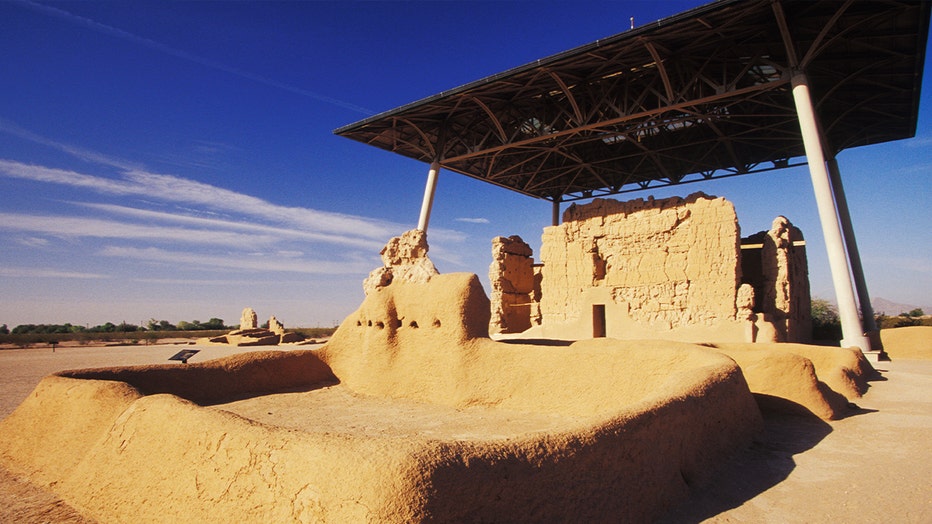Noxious weed problem prompts Casa Grande Ruins picnic area closure
CASA GRANDE, Ariz. - Officials with a national monument south of Phoenix say they are temporarily closing their picnic area as the result of a weed problem.
Casa Grande Ruins National Monument officials announced Wednesday that the picnic area will be closed from March 28 through April 30 due to the density of an invasive and noxious winter weed called stinknet that can grow more than 2 feet (0.6 meters) tall.
The weed has a turpentine-like odor and can cause serious breathing problems as well as severe skin rashes.
Stinknet has bright yellow blossoms on narrow green stems. The blossoms are round and similar to the shape of golf balls, right down to the dimpled pattern.
Arizona Native Plant Society officials said stinknet explosively spread in Maricopa County during the wet fall and winter seasons of 2016, 2018 and 2019. That led to heavy infestations on the north fringes of Phoenix and Scottsdale along with rapid movement southward to Casa Grande.

Casa Grande Ruins in Arizona (Photo by Nik Wheeler/Corbis via Getty Images)
"We also ask that visitors avoid walking near or stepping on this flowing weed in other areas of the park to avoid spreading it," CAGR officials stated.
They said the Casa Grande Ruins team is working on a solution that will get the picnic area reopened as soon as possible, but they said it may take until May 1.
What is stinknet?
According to the University of Arizona Cooperative Extension's website, stinknet is an invasive African annual weed that crowds out native plants, and becomes a fire hazard in the summer. The weed is spreading in Maricopa, Pinal, and Pima Counties, as well as in California, Nevada, Australia, and Mexico. Stinknet, is also known as globe chamomile or by its scientific name Oncosiphon pilulifer, can grow in a variety of habitats, and can cause respiratory or an allergic reaction on a person's skin.
The Arizona-Sonora Desert Museum says the weed can be removed manually. Alternatively, herbicides can be applied, but the website notes that glyphospate herbicide, when used alone, is not reliably effective.
Map of the Casa Grande Ruins National Monument area
The monument, located in Coolidge about 20 miles (32 kilometers) northeast of Casa Grande, preserves a group of structures built by the Hohokam tribe more than 700 years ago.
The Associated Press contributed to this report.

